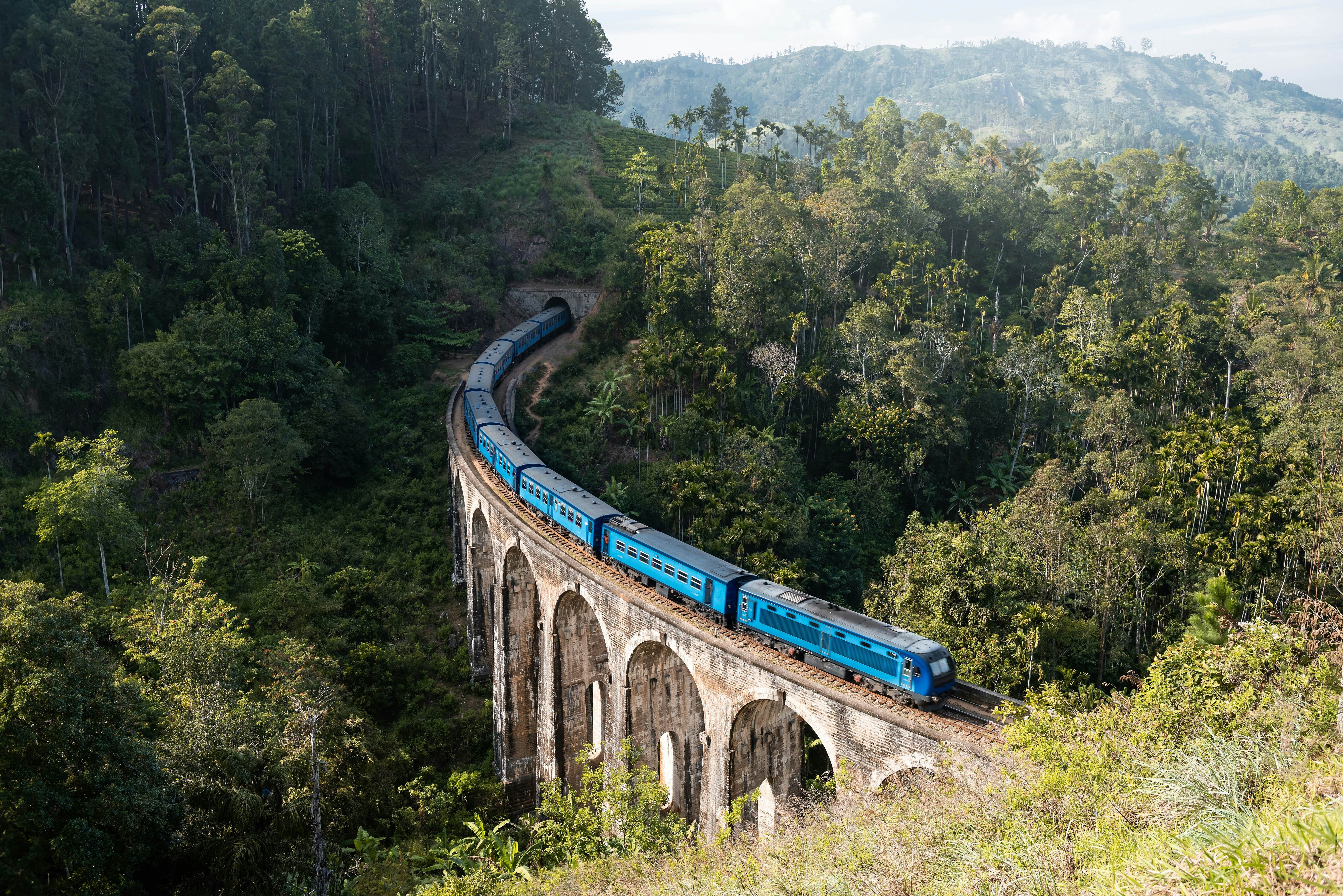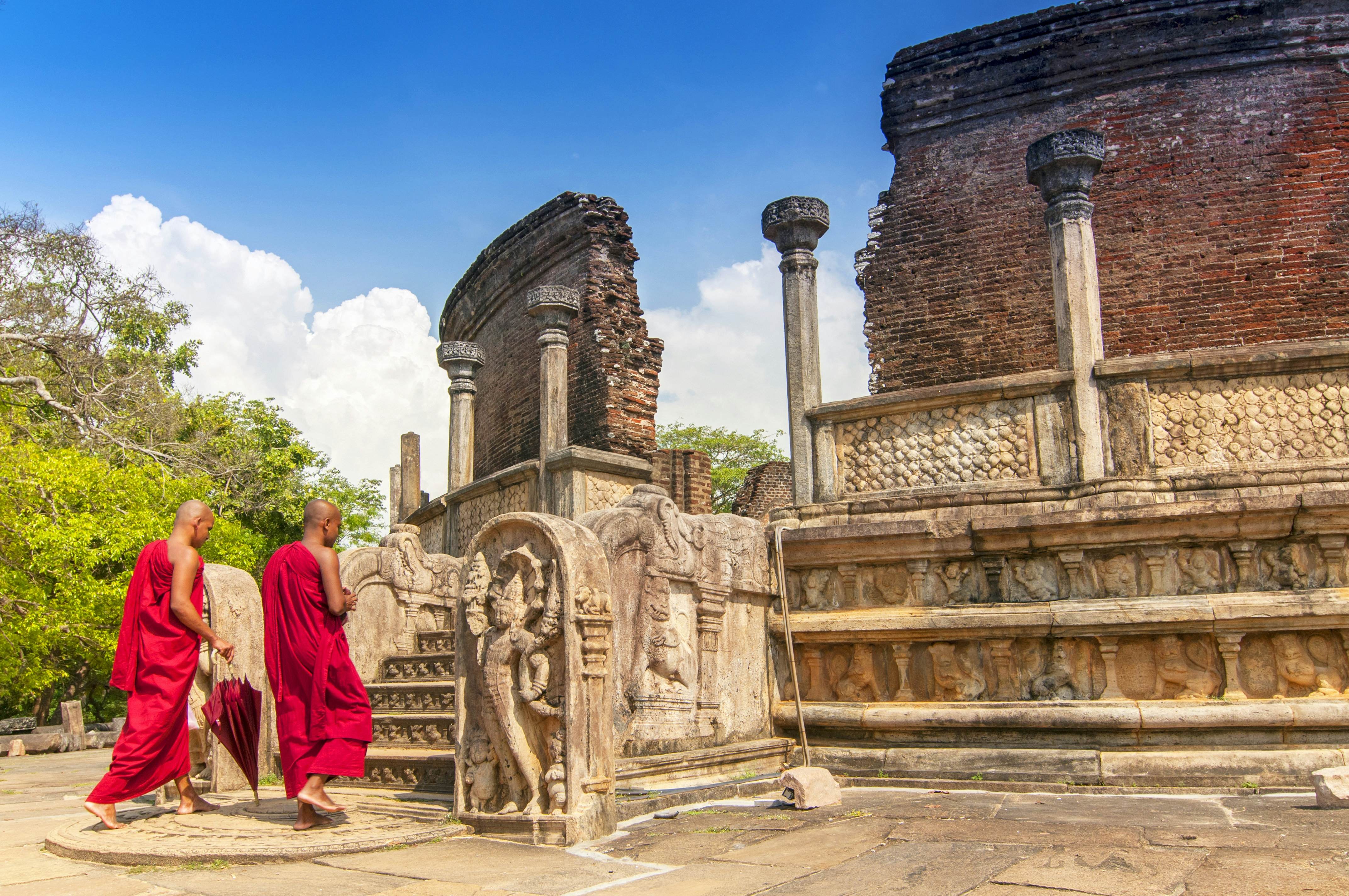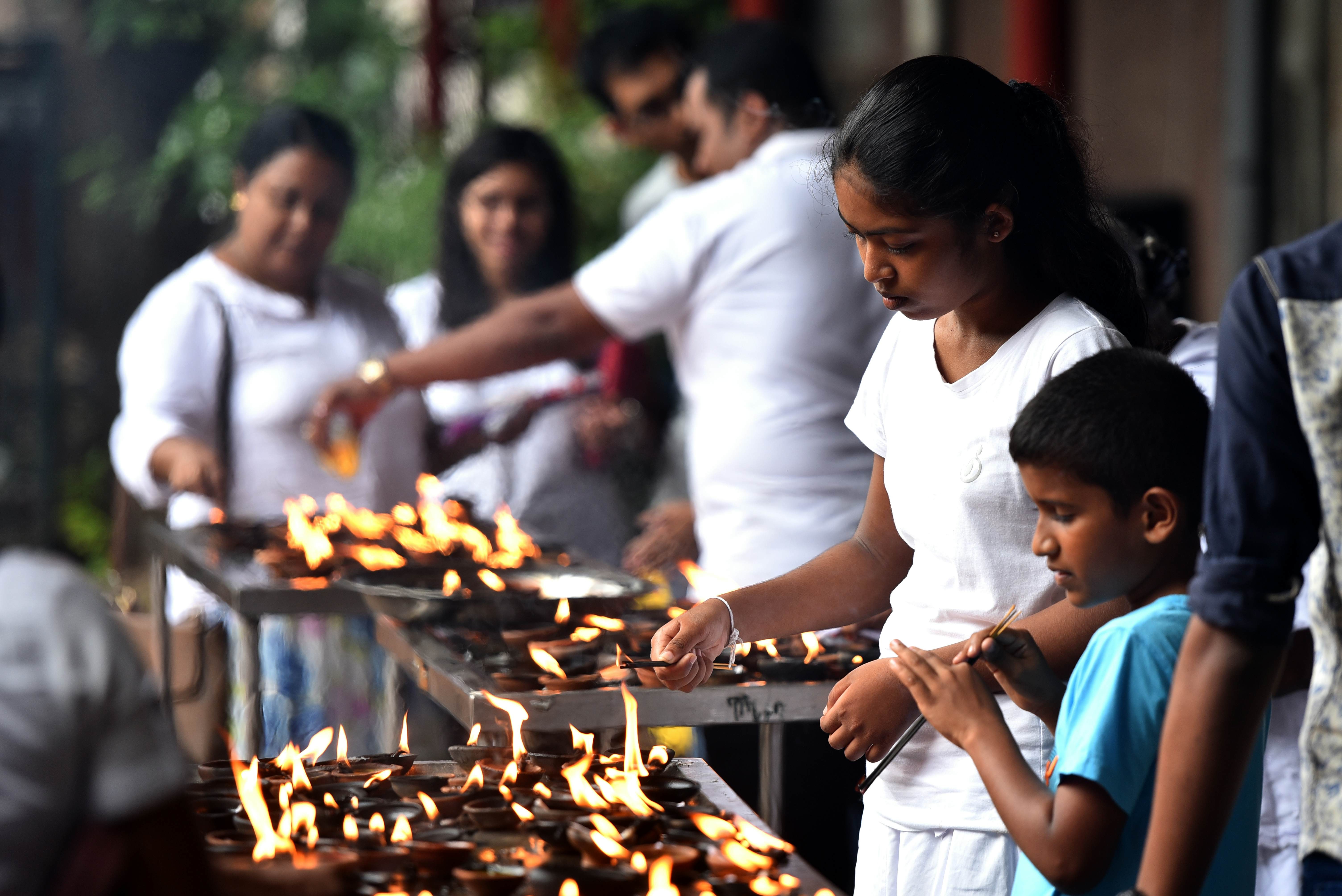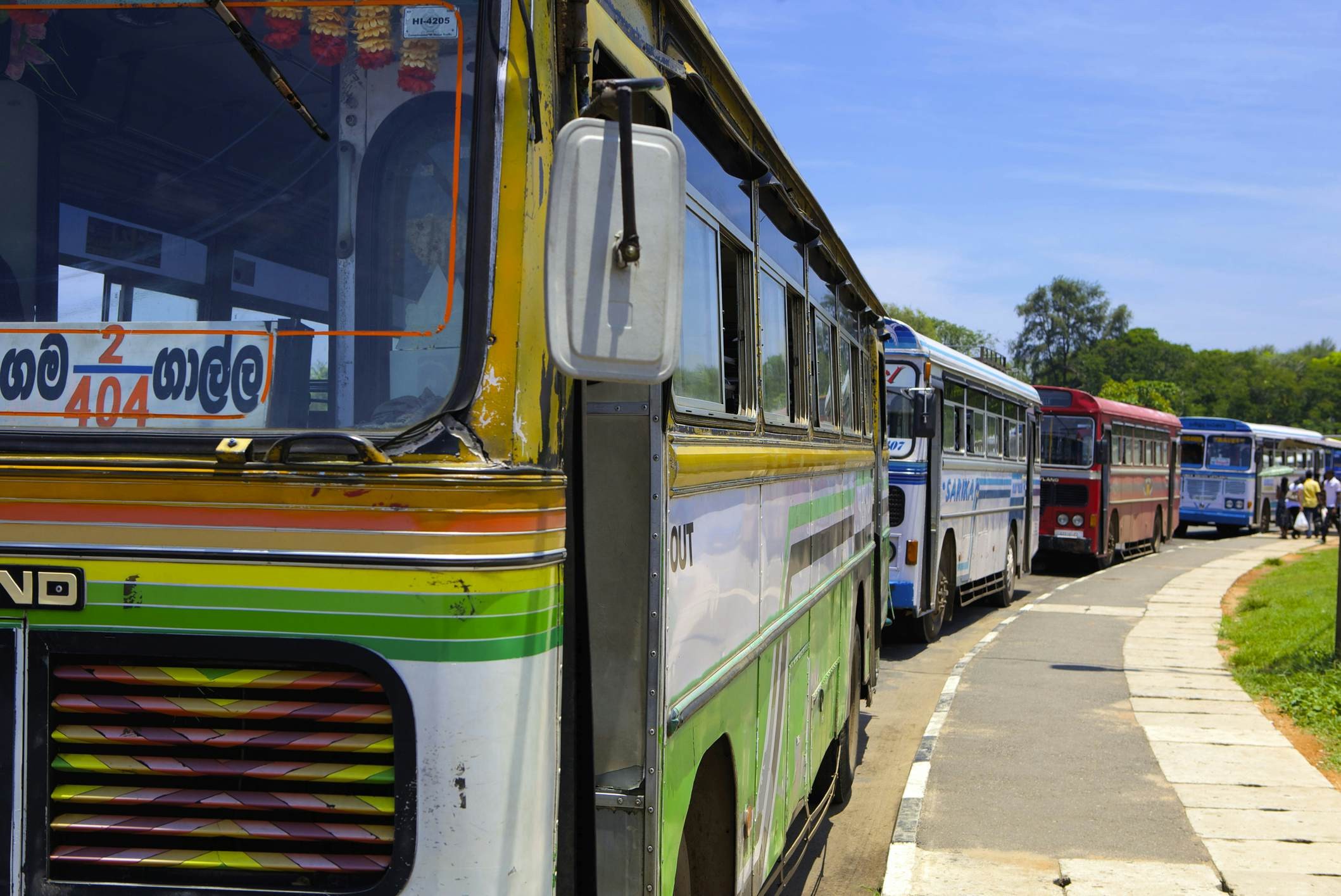Kandy Sri Lanka Tourism offers an immersive experience into the heart of Sri Lankan culture and natural beauty. SIXT.VN is here to guide you through this captivating destination, ensuring a seamless and unforgettable journey. From lush landscapes to historic temples, uncover why Kandy is a must-visit destination for travellers seeking authentic cultural experiences, spiritual enrichment, and scenic adventures.
1. Why Should You Spend Two Weeks (Or More) Exploring Sri Lanka, Including Kandy?
Two weeks is an ideal timeframe to explore Sri Lanka, including the cultural hub of Kandy, but a month allows for a deeper immersion into the island’s diverse offerings. Kandy, nestled in the central highlands, serves as a gateway to exploring tea plantations, ancient temples, and lush landscapes, making it a crucial stop in any Sri Lankan itinerary.
1.1. What Can You Experience in Kandy and Beyond in Two Weeks?
In two weeks, you can explore Kandy’s iconic sites such as the Temple of the Tooth Relic and the Royal Botanical Gardens, while also venturing to the south coast beaches for wildlife safaris and historical sites. Kandy acts as a central point from which you can easily access other attractions like Sigiriya or Ella.
According to research from the Sri Lanka Tourism Development Authority in 2023, visitors who spend at least two weeks in Sri Lanka report a higher satisfaction rate due to the ability to experience a wider range of cultural and natural attractions.
1.2. What Are the Benefits of Spending a Month in Sri Lanka?
Spending a month allows you to delve deeper into Sri Lanka’s cultural and natural wonders, including more extensive explorations of Kandy’s surrounding areas like the Knuckles Mountain Range and nearby tea estates. This extended stay provides opportunities for more spontaneous adventures and a slower pace of travel.
1.3. What Are Some Must-See Attractions Near Kandy?
Near Kandy, must-see attractions include:
- The Temple of the Tooth Relic (Sri Dalada Maligawa): A UNESCO World Heritage Site and one of the most sacred Buddhist temples in the world.
- Royal Botanical Gardens, Peradeniya: A sprawling garden showcasing a vast collection of orchids, spices, medicinal plants, and palm trees.
- Kandy Lake: A scenic lake in the heart of the city, offering peaceful walks and boat rides.
- Knuckles Mountain Range: A paradise for hikers and nature lovers, offering stunning views and diverse ecosystems.
- Tea Plantations: Explore the lush green tea estates surrounding Kandy, learn about tea production, and enjoy tea tasting sessions.
- Pinnawala Elephant Orphanage: Observe rescued elephants in a natural habitat.
1.4. What Are the Best Ways to Embrace Island Life in Kandy?
To embrace island life in Kandy, immerse yourself in local customs by visiting local markets, trying traditional cuisine, engaging with residents, and experiencing cultural performances like Kandyan dancing. Embrace the relaxed pace of life and take time to appreciate the natural beauty surrounding you.
2. When Is the Best Time to Visit Kandy for Optimal Tourism Experiences?
The best time to visit Kandy is from December to April when the weather is drier and more predictable, making it ideal for exploring the city’s attractions and surrounding landscapes. However, Kandy offers unique experiences throughout the year, depending on your interests.
2.1. How Does the Weather Affect Tourism in Kandy?
The weather in Kandy can significantly impact tourism activities; the dry season from December to April is preferred for outdoor adventures, while the monsoon season from May to September may limit some activities but offers lush greenery and fewer crowds. Even during the rainy season, the showers are often brief, allowing for exploration during the rest of the day.
2.2. What Are the Benefits of Visiting Kandy During the Off-Season?
Visiting Kandy during the off-season, from May to October, has its perks. You can enjoy lower prices on accommodations and fewer crowds at popular attractions. The landscape is also incredibly lush and green due to the monsoons, offering a different kind of beauty.
2.3. What Activities Are Ideal for the Rainy Season in Kandy?
During the rainy season in Kandy, indoor activities like visiting museums, exploring temples, and enjoying cultural performances are ideal. The rain also enhances the beauty of the tea plantations and waterfalls, providing unique photo opportunities.
2.4. How Can You Avoid Crowds in Kandy During Peak Season?
To avoid crowds in Kandy during peak season, visit popular attractions early in the morning or late in the afternoon. Consider exploring less-known sites and participating in local cultural events that are off the beaten path.
3. What Vaccinations and Health Precautions Should You Take Before Visiting Kandy?
Before visiting Kandy, consult with your healthcare provider to ensure you have the necessary vaccinations and health precautions. While no vaccinations are compulsory, it’s recommended to be up-to-date on routine vaccines and consider vaccinations for hepatitis A, typhoid, and tetanus.
3.1. What Routine Vaccinations Are Recommended for Travelers to Sri Lanka?
Routine vaccinations recommended for travelers to Sri Lanka include measles, mumps, rubella (MMR), diphtheria, tetanus, pertussis, polio, and varicella (chickenpox). Ensure your vaccinations are current before traveling to Kandy.
According to the Centers for Disease Control and Prevention (CDC), ensuring routine vaccinations are up to date is a fundamental step in preparing for international travel, reducing the risk of preventable diseases.
3.2. When Should You Consult a Healthcare Provider Before Traveling?
You should consult a healthcare provider at least eight weeks before your visit to Kandy. This allows enough time to receive any necessary vaccinations and discuss potential health risks and precautions.
3.3. What Health Risks Are Present in Kandy?
Health risks in Kandy include mosquito-borne diseases like dengue fever and chikungunya. It is also important to be cautious of food and waterborne illnesses. Take necessary precautions to protect yourself from these risks.
3.4. What Precautions Can You Take to Avoid Mosquito Bites in Kandy?
To avoid mosquito bites in Kandy, use insect repellent containing DEET, wear long sleeves and pants, especially during dawn and dusk, and sleep under mosquito nets. These measures will help reduce your risk of mosquito-borne diseases.
4. What Should You Pack to Handle the Heat and Humidity in Kandy?
Packing for Kandy requires consideration of the hot and humid climate. Lightweight, breathable clothing made from natural fabrics like cotton and linen is ideal. Also, pack essentials such as sunscreen, a hat, and comfortable walking shoes.
4.1. What Types of Clothing Are Best Suited for Kandy’s Climate?
Clothing best suited for Kandy’s climate includes loose-fitting linen shorts, dresses, breathable tops, and long maxi skirts. These will help you stay comfortable in the heat and humidity.
4.2. How Can You Protect Yourself from the Sun in Kandy?
To protect yourself from the sun in Kandy, wear sunscreen with a high SPF, a wide-brimmed hat, and sunglasses. Seek shade during the hottest parts of the day.
4.3. What Footwear Is Recommended for Exploring Kandy?
For exploring Kandy, comfortable walking shoes or sandals are recommended. You’ll be doing a lot of walking, so choose footwear that provides good support.
4.4. How Can You Stay Hydrated in Kandy’s Climate?
Staying hydrated in Kandy’s climate is crucial. Drink plenty of water throughout the day. Coconut water is also a refreshing and hydrating option readily available in Kandy.
 Tea plantation landscape near Kandy, Sri LankaExploring the tea plantations near Kandy is a must-do experience.
Tea plantation landscape near Kandy, Sri LankaExploring the tea plantations near Kandy is a must-do experience.
5. How Can You Book Hill Country Train Tickets in Advance?
Booking hill country train tickets in advance, especially during peak season, is essential to secure a seat on the scenic train journeys from Kandy to Ella. The official Sri Lanka Railways website is the best place to book tickets.
5.1. What Is the Best Way to Book Train Tickets in Sri Lanka?
The best way to book train tickets in Sri Lanka is through the official website of Sri Lanka Railways. This allows you to book seats in advance and avoid the risk of trains being fully booked.
5.2. When Should You Book Train Tickets to Ensure Availability?
You should book train tickets several weeks in advance, particularly if traveling during the peak season between December and April. Popular routes like Kandy to Ella sell out quickly.
5.3. What Are the Advantages of Booking Tourist Trains Like Ella Odyssey?
Booking tourist trains like Ella Odyssey offers several advantages, including brief stops at key sights along the way, allowing you to see cascading falls, Hindu temples, and charming railway stations with time to snap photos.
5.4. What Are the Alternatives if Train Tickets Are Sold Out?
If train tickets are sold out, consider alternative transportation options like hiring a private car with a driver through SIXT.VN, or taking a comfortable, air-conditioned bus. These options may be more expensive but ensure a more comfortable journey.
6. Why Are Some Local Eateries Called “Hotels” in Sri Lanka?
In Sri Lanka, some local eateries are called “hotels” due to a historical tradition. These establishments are where locals go for quick, affordable meals. They offer a taste of local cuisine and culture.
6.1. What Is the Origin of Calling Eateries “Hotels” in Sri Lanka?
The origin of calling eateries “hotels” in Sri Lanka is uncertain, but it is believed to have started as a way to attract customers by suggesting a higher standard of service and quality. Over time, it became a common term for small, local restaurants.
6.2. What Type of Food Can You Expect to Find at These “Hotels”?
At these “hotels,” you can expect to find a variety of local dishes, including kottu (a mix of vegetables, meat, egg, and cheese), rice and curry, hoppers, and other Sri Lankan favorites. The food is typically affordable and filling.
6.3. How Do These “Hotels” Differ From Traditional Restaurants?
These “hotels” differ from traditional restaurants in that they are usually smaller, more casual, and cater primarily to locals. They offer a more authentic dining experience and are a great way to experience Sri Lankan culture.
6.4. Why Should Tourists Visit These Local Eateries?
Tourists should visit these local eateries to experience authentic Sri Lankan cuisine and culture. It’s a great way to interact with locals, try new dishes, and get a taste of everyday life in Sri Lanka.
 Monks in Sri Lanka walking into a templeVisiting temples on full moon days in Sri Lanka is a spiritual experience.
Monks in Sri Lanka walking into a templeVisiting temples on full moon days in Sri Lanka is a spiritual experience.
7. How Do Full Moon Days Affect Tourism and Alcohol Sales in Kandy?
Full moon days, known as Poya days, are important religious observances for Sri Lankan Buddhists. On these days, alcohol sales are prohibited, and many businesses close. Tourists should be aware of these restrictions when planning their visit.
7.1. What Is the Significance of Poya Days in Sri Lanka?
Poya days are full moon days considered holy by Sri Lankan Buddhists. Devotees visit temples and engage in religious activities. These days are marked by a sense of peace and reflection.
7.2. How Do Poya Days Impact Alcohol Sales and Availability?
On Poya days, alcohol is not sold in supermarkets, bars, or restaurants. This restriction can impact tourists who wish to consume alcohol during their visit.
7.3. Are There Any Other Restrictions on Poya Days That Tourists Should Be Aware Of?
In addition to alcohol restrictions, some businesses may be closed or operate on reduced hours during Poya days. It’s a good idea to check in advance if you plan to visit specific attractions or establishments.
7.4. How Can Tourists Respectfully Observe Poya Days?
Tourists can respectfully observe Poya days by dressing modestly, avoiding loud or disruptive behavior, and being mindful of local customs and traditions. Visiting temples and observing religious ceremonies can be a meaningful experience.
8. What Languages Do You Need to Know to Navigate Kandy Effectively?
While Sinhala and Tamil are the official languages, English is widely spoken in Kandy, making it easy for tourists to navigate. Learning a few basic phrases in Sinhala or Tamil can enhance your interactions with locals.
8.1. What Are the Official Languages of Sri Lanka?
The official languages of Sri Lanka are Sinhala, Tamil, and English. Sinhala is predominantly spoken in the south, while Tamil is more common in the north and east. English is widely used in business and tourism.
8.2. How Widely Is English Spoken in Kandy?
English is widely spoken in Kandy, particularly in tourist areas, hotels, and restaurants. You can easily communicate with locals in English, but learning a few basic phrases in Sinhala or Tamil can be helpful.
8.3. What Are Some Useful Phrases to Learn in Sinhala and Tamil?
Useful phrases to learn in Sinhala include “ayubowan” (may you live long), “kohomada” (how are you), and “istuti” (thank you). In Tamil, useful phrases include “vanakkam” (hello), “enna kathai” (what’s up), and “nandri” (thank you).
8.4. How Can Learning Local Languages Enhance Your Travel Experience?
Learning local languages can enhance your travel experience by allowing you to connect with locals on a deeper level, show respect for their culture, and navigate more easily. Even a few basic phrases can go a long way in building rapport.
9. How Should You Dress to Respect Local Customs, Especially at Religious Sites?
When visiting religious sites in Kandy, it’s important to dress respectfully by covering your shoulders and knees. Remove footwear before entering temples and be mindful of local customs and traditions.
9.1. What Is Considered Appropriate Attire for Visiting Temples in Kandy?
Appropriate attire for visiting temples in Kandy includes clothing that covers your shoulders and knees. Avoid wearing revealing or overly casual clothing.
9.2. Are There Any Specific Requirements for Men and Women?
In some Hindu temples, men may be required to remove their shirts. Always pay attention to signs outside the temple for specific requirements.
9.3. What Other Considerations Should You Keep in Mind When Visiting Religious Sites?
Other considerations when visiting religious sites include maintaining a respectful demeanor, avoiding loud conversations, and refraining from taking photographs in restricted areas.
9.4. How Can You Show Respect for Local Customs in Other Public Settings?
In other public settings, you can show respect for local customs by dressing modestly, avoiding public displays of affection, and being mindful of local traditions and etiquette.
 Sri Lankan women with incenseRespectful attire is required when visiting temples.
Sri Lankan women with incenseRespectful attire is required when visiting temples.
10. What Is the Etiquette for Eating With Your Hands in Sri Lanka?
In Sri Lanka, it’s common to eat with your right hand, as the left hand is traditionally considered unclean. Use your fingertips to mix dishes and condiments with rice. While not mandatory, locals appreciate it when tourists make an effort to eat with their hands.
10.1. Which Hand Should You Use to Eat?
You should use your right hand to eat, as the left hand is traditionally considered unclean.
10.2. How Should You Mix Dishes and Condiments With Rice?
Use your fingertips to mix different curry dishes and condiments with rice. Avoid using your palm or fingers up to the knuckles.
10.3. Is It Mandatory to Eat With Your Hands?
It is not mandatory to eat with your hands, but locals will appreciate it if you make an effort to do so. Utensils are usually available for those who prefer to use them.
10.4. What Are Some Other Dining Etiquette Tips to Keep in Mind?
Other dining etiquette tips include waiting for everyone to be served before starting to eat, avoiding wasting food, and refraining from talking with your mouth full.
11. How Common Is Tipping in Kandy, and How Much Should You Tip?
Tipping is not mandatory in Kandy, but it is appreciated, especially in the tourism industry. If you experience good service, consider leaving a tip of 10% of the bill.
11.1. Is Tipping Expected in Sri Lanka?
Tipping is not strictly expected in Sri Lanka, but it is a common practice in the tourism industry.
11.2. When Should You Consider Tipping?
You should consider tipping when you receive good service, such as at restaurants, hotels, and from drivers or tour guides.
11.3. How Much Should You Tip for Good Service?
For good service, you can leave a tip of 10% of the bill. For exceptional service, you may consider tipping more.
11.4. What If a Restaurant Charges a Service Charge?
If a restaurant charges a service charge, Sri Lankans generally don’t tip, as the service charge is split among the staff.
12. Is It Recommended to Drive Yourself in Kandy?
While it’s technically possible to drive yourself in Kandy, it’s generally not recommended due to local driving habits and road conditions. Public transport and taxis are safer and more convenient options.
12.1. What Are the Challenges of Driving in Sri Lanka?
Challenges of driving in Sri Lanka include reckless driving habits, heavy traffic, and poor road conditions. Road accidents are common.
12.2. What Are the Alternatives to Driving Yourself?
Alternatives to driving yourself include using public transport like buses and trains, hiring a private car with a driver through SIXT.VN, or taking tuk-tuks.
12.3. What Are the Advantages of Using Public Transport?
Advantages of using public transport include affordability and the opportunity to experience local culture.
12.4. How Can SIXT.VN Help With Transportation in Kandy?
SIXT.VN can help with transportation in Kandy by providing reliable and comfortable private car services with experienced drivers. This ensures a safe and hassle-free travel experience.
 Buses in Sri LankaPublic transport in Sri Lanka is a safe and affordable way to get around.
Buses in Sri LankaPublic transport in Sri Lanka is a safe and affordable way to get around.
13. Is It Safe to Drink Tap Water in Kandy?
It is not recommended to drink tap water in Kandy. As a visitor, it’s best to stick to bottled water or boil and filter tap water before drinking to avoid potential health issues.
13.1. Why Is Tap Water Not Recommended for Tourists?
Tap water is not recommended for tourists because you may not be used to the microorganisms in it, which can cause stomach issues.
13.2. What Are the Safe Alternatives to Tap Water?
Safe alternatives to tap water include bottled mineral water, which is widely available, or boiling and filtering tap water before drinking.
13.3. How Can You Reduce Plastic Waste While Staying Hydrated?
To reduce plastic waste, bring a reusable water bottle and consider traveling with water purification tablets.
13.4. Is It Safe to Brush Your Teeth With Tap Water?
It’s best to avoid brushing your teeth with tap water. Use bottled or filtered water instead.
14. What Scams Should You Be Aware Of When Using Tuk-Tuks in Kandy?
Be aware of tuk-tuk scams in Kandy, such as drivers promising to take you to spas or gem boutiques for a commission. Avoid tuk-tuks without a meter and use ride-hailing apps like Uber or PickMe for fair pricing.
14.1. What Are Some Common Tuk-Tuk Scams in Kandy?
Common tuk-tuk scams in Kandy include drivers taking you to shops or spas where they receive a commission, overcharging fares, or claiming that a particular attraction is closed to take you elsewhere.
14.2. How Can You Avoid These Scams?
To avoid these scams, use tuk-tuks with a meter, negotiate the fare in advance, and avoid tuk-tuks that approach you with unsolicited offers.
14.3. What Are the Benefits of Using Ride-Hailing Apps Like Uber or PickMe?
Benefits of using ride-hailing apps like Uber or PickMe include transparent pricing, the ability to track your ride, and the assurance of a professional driver.
14.4. What Should You Do if a Tuk-Tuk Driver Tries to Scam You?
If a tuk-tuk driver tries to scam you, remain calm, refuse to pay the inflated fare, and report the incident to the local authorities or the ride-hailing app.
15. How Should You Interact With Wildlife to Ensure Safety and Respect for Animals?
When interacting with wildlife in Kandy, maintain a safe distance, avoid feeding animals, and respect their natural habitats. Observe animals from afar and do not attempt to touch or disturb them.
15.1. What Types of Wildlife Might You Encounter in and Around Kandy?
Around Kandy, you might encounter monkeys, elephants, monitor lizards, peacocks, and various bird species.
15.2. Why Is It Important to Maintain a Distance From Wildlife?
Maintaining a distance from wildlife is important for your safety and the well-being of the animals. Approaching or feeding animals can alter their behavior and lead to conflicts.
15.3. Why Should You Avoid Feeding Animals?
You should avoid feeding animals because it can make them dependent on humans for food, disrupt their natural feeding habits, and lead to overpopulation and disease.
15.4. What Should You Do if You Encounter an Elephant on the Road?
If you encounter an elephant on the road, observe it from afar, maintain a respectful distance, and do not try to approach or feed it.
Planning a trip to Kandy Sri Lanka tourism offers unique opportunities for cultural immersion, scenic beauty, and spiritual enrichment. With SIXT.VN, you can book airport transfers, hotels, and tours, ensuring a smooth and memorable experience.
Ready to explore the enchanting city of Kandy? Contact SIXT.VN today to plan your perfect Sri Lankan adventure!
Address: 260 Cau Giay, Hanoi, Vietnam
Hotline/Whatsapp: +84 986 244 358
Website: SIXT.VN
FAQ: Your Questions About Kandy Sri Lanka Tourism Answered
Q1: What is Kandy best known for?
Kandy is best known for being the home of the Temple of the Tooth Relic, one of the most sacred Buddhist temples in the world, as well as its beautiful landscapes and rich cultural heritage.
Q2: How many days should I spend in Kandy?
Ideally, you should spend 2-3 days in Kandy to explore its main attractions, including the Temple of the Tooth, Royal Botanical Gardens, and Kandy Lake.
Q3: Is Kandy safe for tourists?
Yes, Kandy is generally safe for tourists. However, it’s always wise to take normal precautions like safeguarding your valuables and being aware of your surroundings.
Q4: What is the best time of year to visit Kandy?
The best time to visit Kandy is from December to April when the weather is drier and more predictable, making it ideal for exploring the city.
Q5: What should I wear when visiting the Temple of the Tooth?
When visiting the Temple of the Tooth, dress modestly by covering your shoulders and knees. Remove your footwear before entering the temple.
Q6: Are there ATMs in Kandy?
Yes, there are ATMs available in Kandy, particularly in the city center. However, it’s always a good idea to have some cash on hand, especially when visiting smaller establishments.
Q7: Can I use US dollars in Kandy?
While some establishments may accept US dollars, it’s best to use Sri Lankan Rupees (LKR) for most transactions. You can exchange currency at the airport or in banks in Kandy.
Q8: What are some must-try foods in Kandy?
Must-try foods in Kandy include rice and curry, kottu roti, hoppers, and local sweets like kavum and kokis.
Q9: How can I get around Kandy?
You can get around Kandy by tuk-tuk, bus, or taxi. Ride-hailing apps like Uber and PickMe are also available.
Q10: Are there any cultural events or festivals in Kandy?
Yes, Kandy hosts several cultural events and festivals throughout the year, including the Esala Perahera, a grand procession featuring dancers, drummers, and elephants, usually held in July or August.



